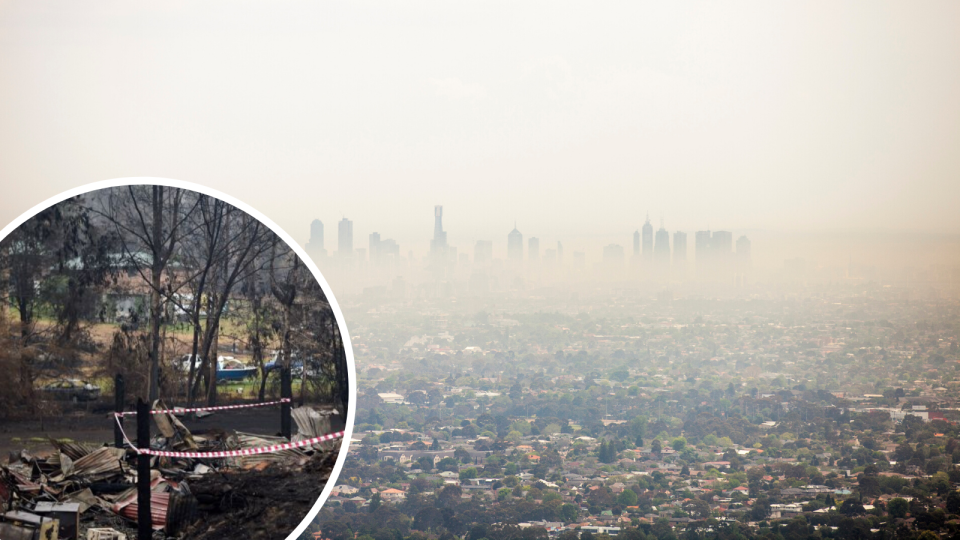What Australia's bushfires mean for housing affordability

Bushfire-ravaged communities will see plummeting property prices and higher rent in the short-term, but meaningful value growth in the long-term, according to the experts.
However, the true long-term consequences are hazy – as the ongoing climate risks have complex implications and will continue to affect buyer decisions.
Related story: Australia's much-needed economic pick-up has been choked by smoke and fire
Related story: Discount home loans offered to green Aussies
Related story: Westpac covers bushfire victims' mortgages for a year
Yahoo Finance spoke to three property experts about how housing affordability would be impacted by the bushfires. Here’s what they said.
Short-term: Demand takes a hit, rent and insurance will rise
Unsurprisingly, areas hit by bushfires will have a direct impact on real estate and the local property market, according to RiskWise Property chief executive Doron Peleg.
"In the short term – at least a couple of years – it will be highly likely there will be price reductions and significantly reduced demand,” he told Yahoo Finance.
“Buyers negotiate hard and require major discounts to reflect the risk for additional bushfires and in the future and that it will potentially be harder for them to sell the property.”
The other thing to consider is that insurance premiums will rise in those areas, Peleg said.
“While not at the same scale in relation to the value of the property, they will still have a material impact on the ongoing out-of-pocket expenses of buyers,” he said.
While we can’t know how much insurance premiums will rise by – as this will depend on the level of risk in any given area – the hikes will likely be "substantial".
Additionally, the number of displaced individuals has put significant strain on nearby accommodation, said Hotspotting managing director Terry Ryder.
“In some regional locations, it will create a short-term shortage of rental properties - those who have lost homes will need to rent in the short-term. That is likely to put upward pressure on rents,” he said.
The same trend occurred in Townsville when major floods hit in February last year, where people had to rent while home repairs were underway.
Realestate.com.au chief economist Nerida Consibee said that Bairnsdale, in Victoria’s East Gippsland, is seeing very high levels of rental demand of 300 per cent more than this time last year.
“Bairnsdale is 189 kms from Mallacoota. Rental affordability will likely be reduced due to this high demand,” Conisbee told Yahoo Finance.
“If we look at previous bushfire impacted regions (eg Kinglake and St Andrews following Black Saturday in 2009), there was an increase in listings following the fires as people looked to leave the area.“
Long-term: Bushfire-hit areas to bounce back better than you think
When it comes to the long-term impacts of the bushfires, the property experts had both good and bad news.
The bad news is that these bushfires are something of a ‘new normal’ – and the risk of a warming earth is here to stay.
“The scale of the current bushfires and the concerns that this will become is a continuous problem in the future,” Peleg said.
“Obviously there is now a big new variable being repeatable events in the same area. Many people are concerned this is not a one-off event.
“If there are more major bushfires in the next few years this is highly likely to have a sustained impact.”
Unsurprisingly, owner-occupiers will prefer to live in safer locations.
The good news is that the process of rebuilding these communities will cause a flurry of economic activity in the region, causing a ‘mini-boom’ in regional bushfire-hit areas.
“Given that Australia is the land of natural disasters (drought, bushfires, cyclones, storms, floods), there is a high level of resilience and the negative impacts will be relatively short term,” Ryder said.
“Government money, insurance money and donation funds will be poured into re-building homes and businesses and supporting households adversely impacted by the fires.
“We've already seen how the nation has mobilised to support families, individuals and communities hurt by this catastrophe and there will be a recovery.”
And in fact, property values in bushfire-hit areas could even eventually beat out neighbouring areas, Conisbee noted.
“Longer term, bushfire affected regions tend to outperform the wider market,” she said.
“This may be because better homes are built and measures are taken to prevent future catastrophic fire events. It is also likely to be because many areas that are bushfire prone are also beautiful places to live which increases demand more generally.”
And yet that’s not the full picture, either. The impact of bushfire damage may linger in people’s memories and shape their decisions, warned Peleg.
“It is possible the bushfire risk, even without the realisation of the event, will play a more substantial part in consideration,” he said.
Like the 2001 floods in Queensland, an emphasis on flood risk emerged even outside of affected areas.
The highly publicised Opal and Mascot tower disasters saw apartment buyers in general spooked by structural deficiencies in sky-rise buildings.
“The realisation that this risk could occur in other places/buildings is obviously increasing and people take that into consideration,” Peleg said.
“The key point is that the scale of these events is so huge and unprecedented they will have impact for years to come.”
Make your money work with Yahoo Finance’s daily newsletter. Sign up here and stay on top of the latest money, news and tech news.

 Yahoo Finance
Yahoo Finance 
